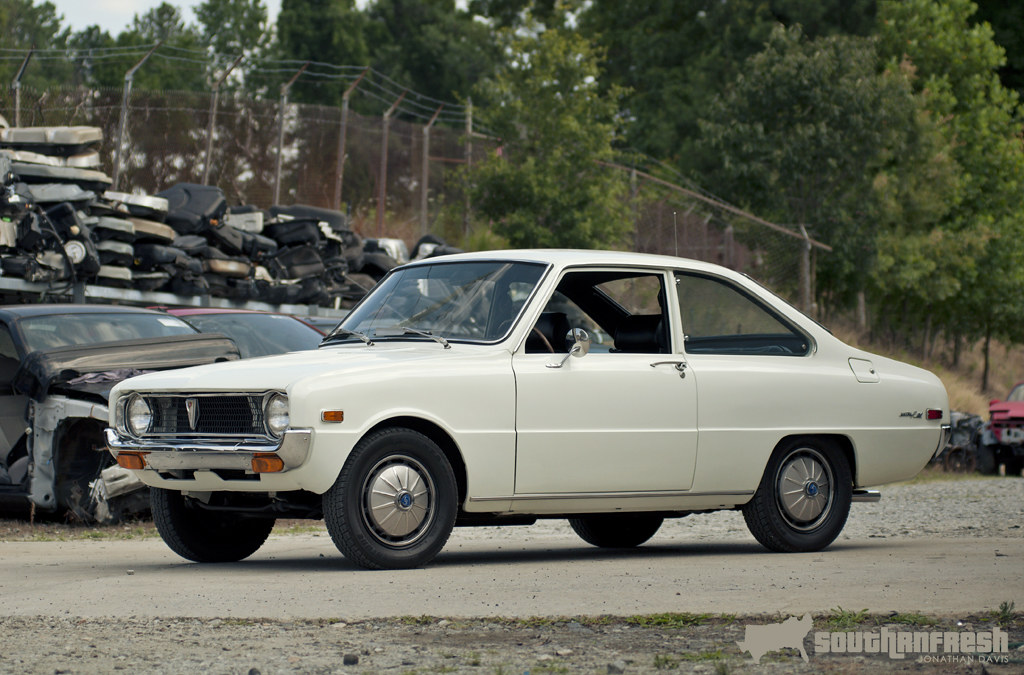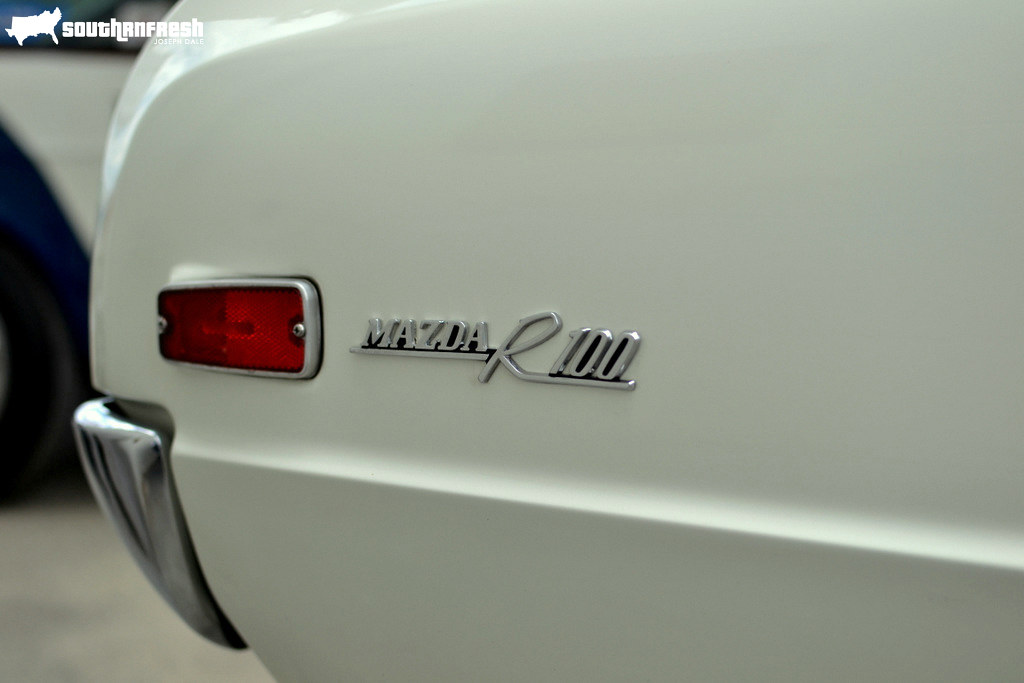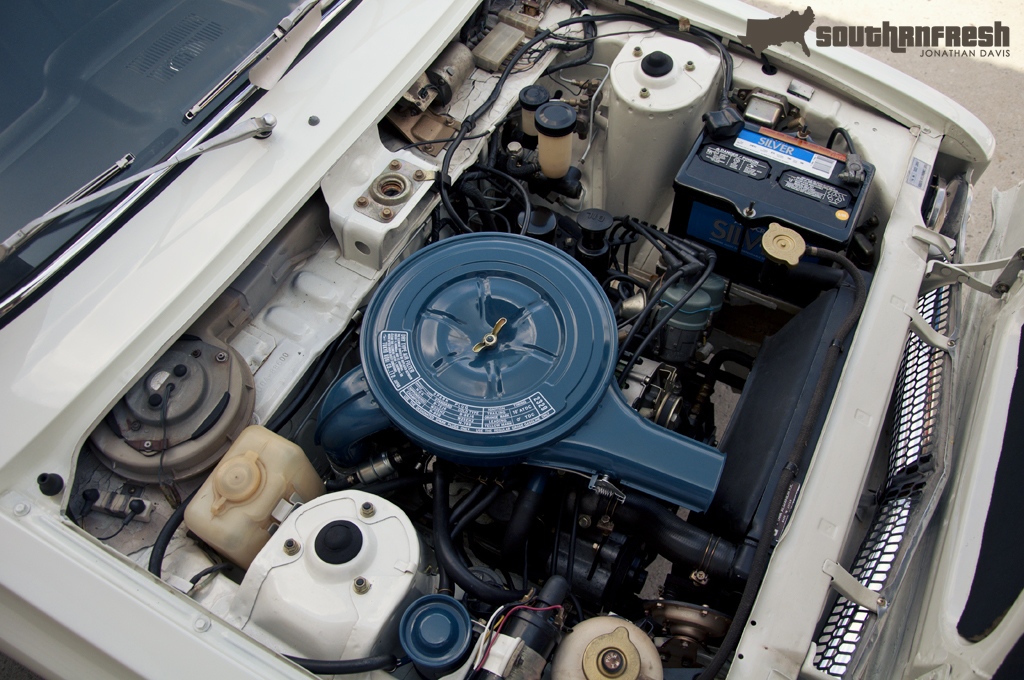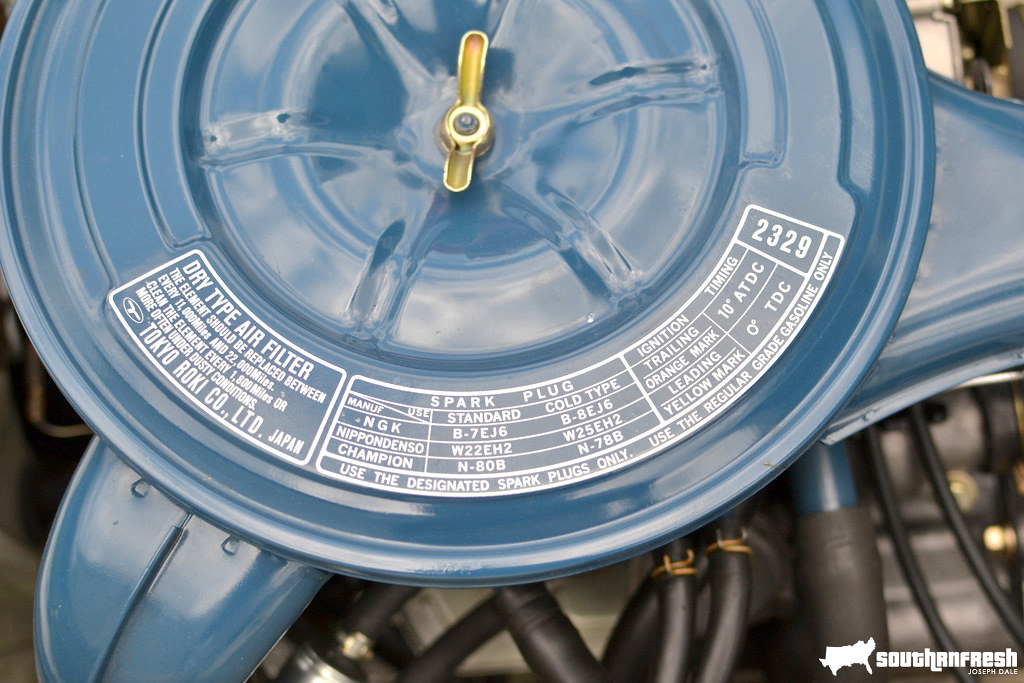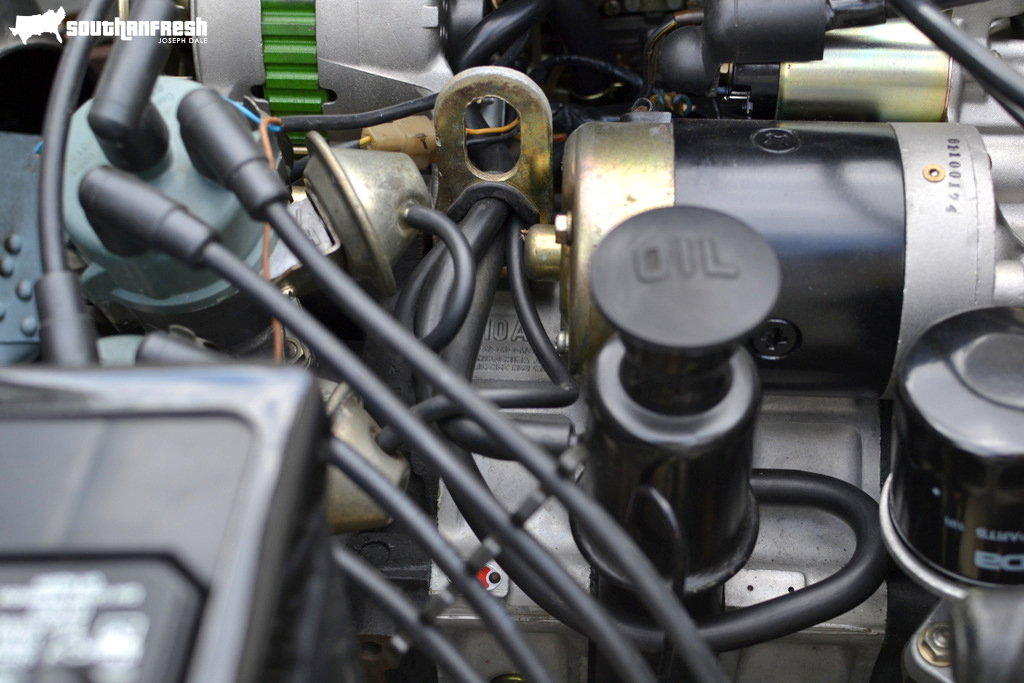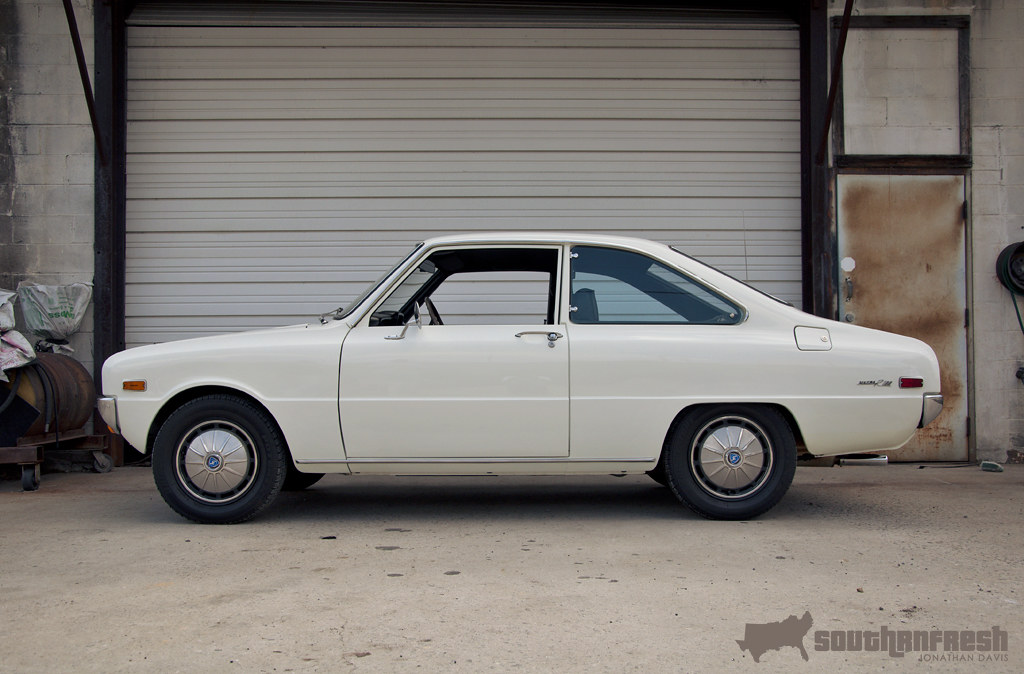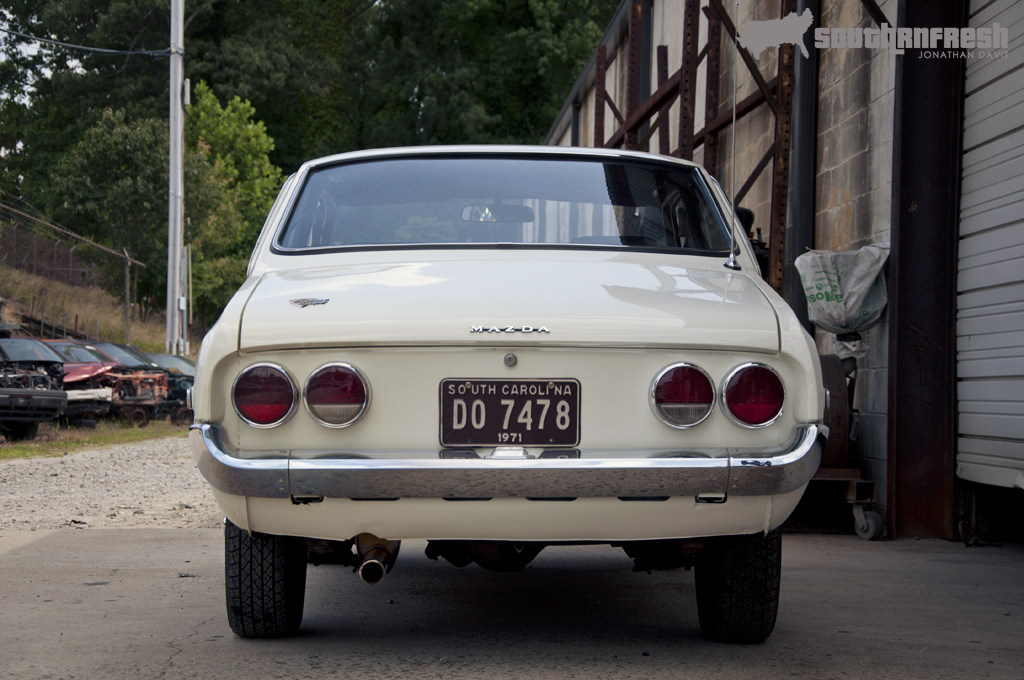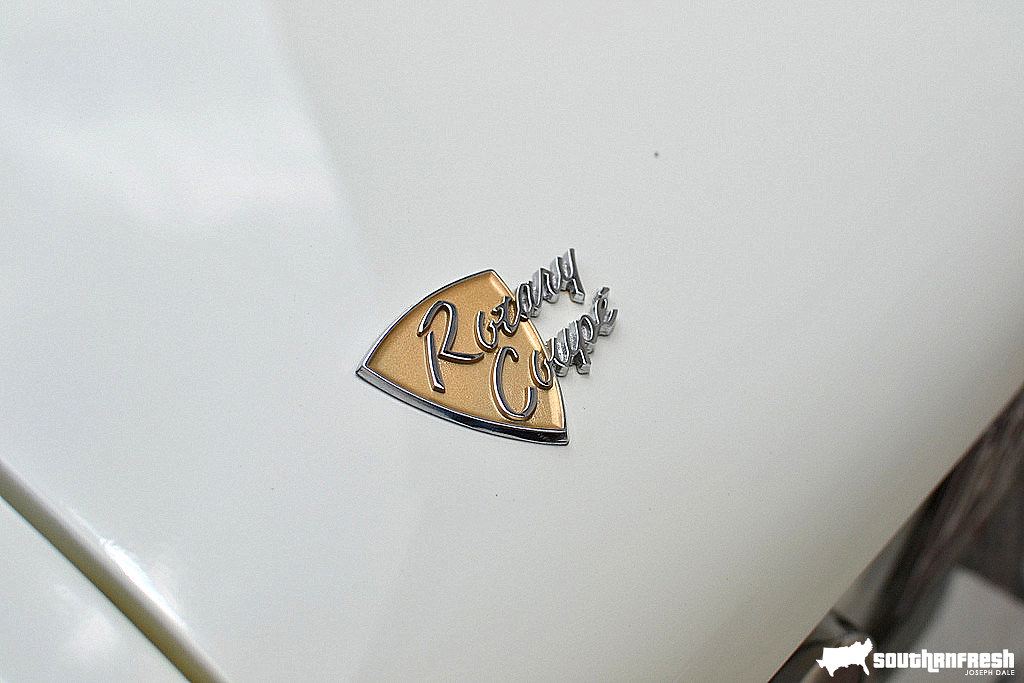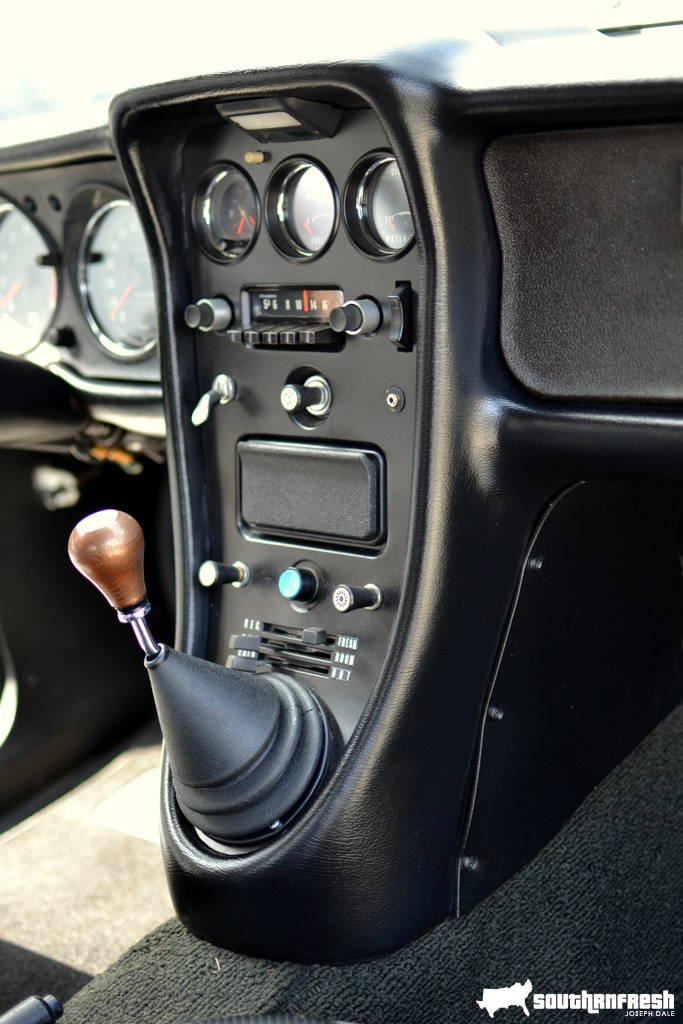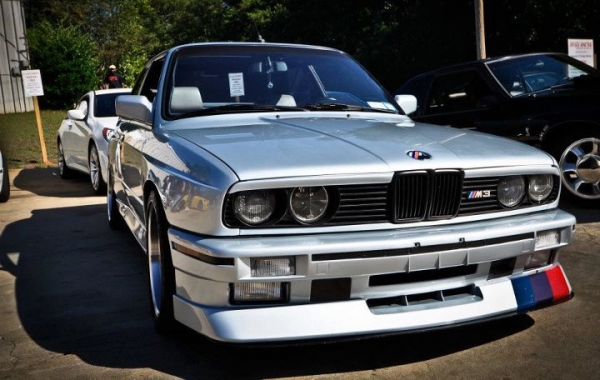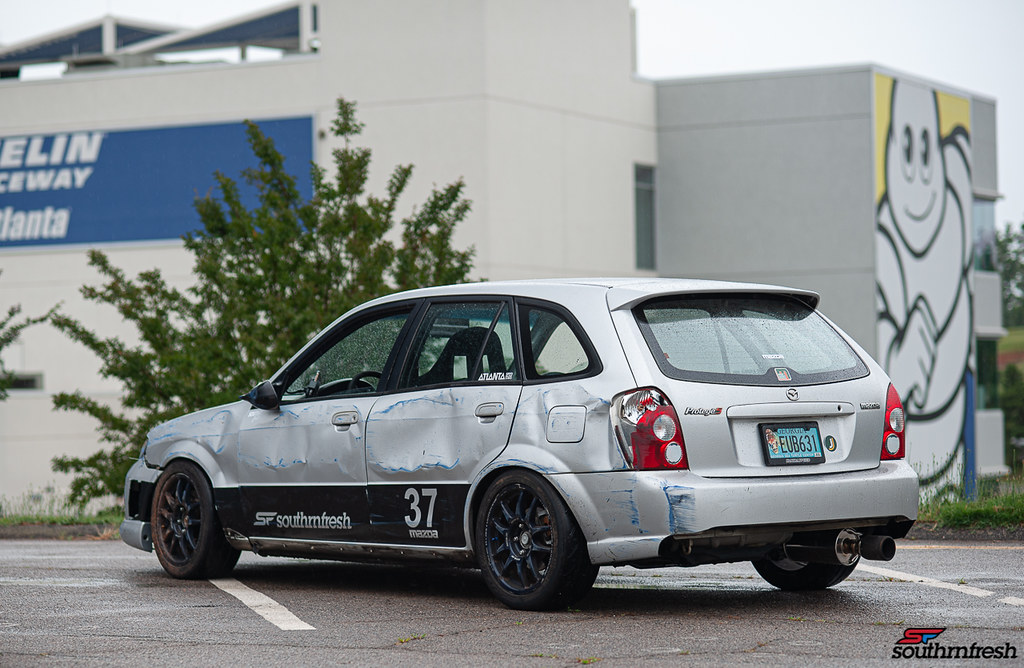Throwback Thursday 2012 Feature: Scott Lorick’s 1971 Mazda R100
Our third old school is a piece of history for any rotary lover and very special to any fan of Mazda. Not only was it one of the first Mazdas to hit U.S. shores, but it was one of the first rotary powered vehicles as well. So it was a very important car for Mazda to hit U.S. soil with a new coupe and a whole new engine design. Mazmart held a Mazda meet at their shop and the car’s owner, Scott Lorick, was kind enough to drive it down all the way from Chattanooga for the event.
I’m sure, for some of you, this may be your first time even hearing about the Mazda R100. I believe most people’s thoughts of old Mazda vehicles stops at the popular RX cars of the 70s. But the one that started the ball rolling was the R100. There is a weird coincidence that I am writing about rotary beginnings with the R100 on the day Mazda officially announced that it is ending production of the 13B. This R100 was restored by Scott Lorick who is an antique collector that has a habit of collecting and restoring cars. As I talked to Scott about the car, he mentioned many times that this car would have not have been anyhere near complete without Rick Engman, the owner of Mazmart. Mr. Engman is very close to everything Mazda and everything rotary. This video of Mr. Engman behind the wheel of the RX-792P should serve as some statement of his close ties with Mazda.
If anyone knows me, they know that I am a big Mazda fan boy and I often let it show too much when I put up content on here. But I knew this car would be something that everyone will enjoy, simply because there is a growing popularity of old school imports developing in our generation. I think it’s mainly because some of the newer vehicles do not serve much of an importance to the company as many of the older imports and domestics did. These cars were manufactured in the early stages of a company’s life, so there was a lot on the line if these cars did not meet everyone’s expectations. And these cars were not made to last 5-10 years, they were made to last as long as the owner wanted it to last. Cars were taken care of back then, not because they were expensive, but because they meant something to the owner when they were handed the keys. Recently a lot of companies are trying to rebuild their brand by spotlighting their history in almost every commercial. It’s somewhat of a good sign that companies are taking this approach and reevaluating their relationship with consumers.
Most of the photos are from Jon, and some of them were taken by myself. With all the content that’s posted, I try my hardest to have factual information. But as you know, the internet is full of good and bad information. I will be adding inserts from this link that I found online that seems to be solid. Enjoy!
MAZDA R100 history from down under
We start off with this photo of a pair of R100s at Mazmart. Scott told me that Mr. Engman did not give up pieces of his gems easily because he had to be sure that Scott was going to complete his restoration. We have all seen plenty of projects on forums start strong then fall short and stop. So I can’t disagree with being sure that the sale of parts so rare and hard to find were going to the right hands. Scott told me of days where he would come into the shop to see parts laying on the table. He was at the mercy of Mr. Engman and it took some time to let go of certain irreplaceable parts.
Scott told me that this project took him a total of 3 years to get back in this showroom condition. The only compromise that he said he had to make was with the exhaust.
When the car was introduced no one truly knew how much performance was to be had from the car. At the time of its release the R100 was a $3000.00 car, and from what I have read there were dealer upgrades that could be bought.
In late 1970, a series of sports kits where offered by the factory in 5 different grades. Starting at a 10% power upgrade A1 kit through to a 100% power upgrade B2 kit. The A grade kits consisted of varies bolt on goodies such as carbies, manifolds & exhausts. Whilst the B grade kits required engine porting such as the recently developed bridge port.
All kit variations had suspension & brake mods available aswell. Potential buyers would have broken into a sweat when they found the pricing of the upgrade kits. Whilst the A1 kit drained your wallet of only $290 (10% sale price of car), the B2 kit almost doubled the cars value at $2500.Ouch ! Nobody is sure if any of these kits wherever sold in Australia as many dealers can’t recall ever hearing about them. Within another 12 months the R-100 was of the new-car sales list with the sports upgrade kits fading into memory.
The circle taillights we see on many of the later year RX cars began here. You can also see the old Mazda “M” logo in the front grill. There were no exposed bolts to show, but back in the 70s Mazda stamped all their bolts with the “M” logo, i highly doubt we will ever see small things like that being added to bolts of today’s cars.
When I am around cars in this type of condition, I always get up close and personal and look for small details and examine the logos of older cars. The “100” in the name stands for the amount of horsepower the car made, and I did not get factual info but I can only guess that the “R” stands for Rotary.
The engine bay follows the rest of the car’s immaculate condition. The 10A has all of the factory emissions still attached. The only missing link is the air conditioning unit. Scott said that he saw a A/C equipped R100 parts car on Ebay for around 5,000$ 2 years ago. He passed on it because he could not justify spending that much on it just for the A/C parts. He figured he would see another pop up eventually…he is still waiting for one to show up.
Another sign of a classic are decals like these. These cars were made to be repaired and kept up by the average Joe. Every piece of information needed to tune and or maintain the vehicle was listed on the air filter cover. A huge change from current vehicles that show nothing but plastic covers and maybe if you’re lucky you will get a dipstick so you can check the oil on your own.
Tried my best to get a shot of the 10A stamp on the housing. Even back in the 70s Mazda engineered the motor for fuel economy and it was rated at 23mpg. It came with a twin distributor setup, one for each rotor, that can be adjusted individually. You can see the extra care that Scott took went into having everything just like it was in 1971 and in working condition.
When our motoring journalists got hold of the test models they reported not wanting to return them such was the enthusiasm & fascination for the engine. Mazda Japan where quoting a 16.4 ET for the car but the best time reported here was a 17.8@74mph. Perhaps they where not yet used to the rotary engine character, or perhaps the Japanese factory drivers where a little optimistic. Inevitably, the little Mazda white washed all opposition in its class & had to move upscale to find bigger fish.
The R100 also had a decent run in motorsports. Photo of the Mazda built R100 Spa Racer
As for the racing, Mazda went into the field with blind ambition. They where after all very proud of there new exportable rotary engine. In July 1969, Mazda entered two factory prepared R-100 racers in the famous SPA-frankcorchamps 24hr. The SPA R-100’s ran with their Cosmo type all aluminium 10A engines. By this stage Mazda Peripheral Port engines where capable of 200+ hp but the SPA engines where held to 187hp for endurance reasons. Still the R-100’s put in a giant killing performance to finish a very respectable 5th & 6th place overall, behind the factory backed Porsche 911’s. For the 1970 SPA an R-100 again came 5th outright.
As mentioned before, the rear taillights of the R100 inspired the look of the tails on the Rx-2 released after.
It is also well known that Mazda did the R-100 only as an interim “test the water” model before the official rotary sedan was developed (RX-2)
Another sign of a classic are the signature badges. Think about the last time a manufacturer has released a vehicle with model specific badges. One reason why classics are loved so much is because of the character these cars develop. Part of this character is found in the small details such as these badges.
The old Mazda logo
Lubrication & maintenance sticker
Being the owner of an old car myself, I can appreciate a truly reconditioned interior with everything in working order. The factory wood grain, 3-spoke steering wheel and shift knob were in tip top shape. A short lived tradition with rotary cars are the rotary shaped shaped logos on the steering wheels. This unfortunately stopped with the Rx3, but Mazda always found ways to incorporate the rotor triangle elsewhere.
A shot of the factory Clarion radio and the cockpit like gauge setup above.
Closer shot of the center console and the side stack of analog gauges. Keep in mind that this car has not been in a warehouse or kept in a shed for 40 years, it was just restored to this condition.
That is all of our old school features this week and I hope you all enjoyed them. It’s obvious that the R100 was closer to me personally, but I am equally a fan of each of them. Without their individuality there would be no Southrnfresh, and this thing we do to our cars would not be what it is today.
Special thanks to Paul @ Mazmart for giving us the time with Mr. Lorick’s car.


